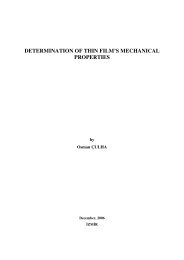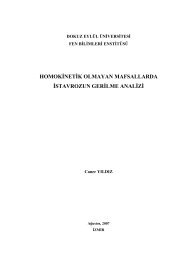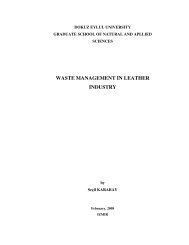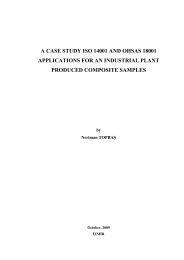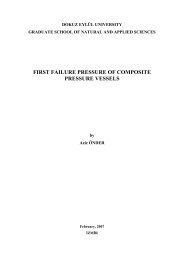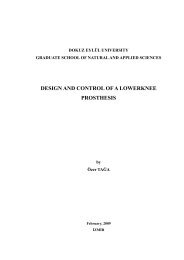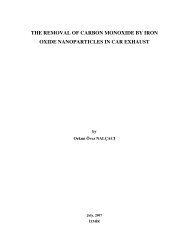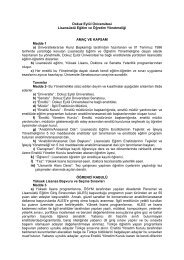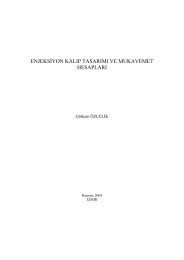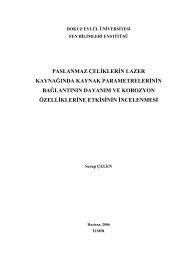DETERMINATION OF THIN FILM'S MECHANICAL PROPERTIES
DETERMINATION OF THIN FILM'S MECHANICAL PROPERTIES
DETERMINATION OF THIN FILM'S MECHANICAL PROPERTIES
Create successful ePaper yourself
Turn your PDF publications into a flip-book with our unique Google optimized e-Paper software.
25<br />
so responds to changes in depth of penetration of the indenter, is set to a datum<br />
position. While the preliminary minor load is still applied an additional major load is<br />
applied with resulting increase in penetration. When equilibrium has again been<br />
reach, the additional major load is removed but the preliminary minor load is still<br />
maintained. Removal of the additional major load allows a partial recovery, so<br />
reducing the depth of penetration. The permanent increase in depth of penetration,<br />
resulting from the application and removal of the additional major load is used to<br />
calculate the Rockwell hardness number as shown in Figure 3.2 (Ziheng Yao, 2005) .<br />
Figure 3.2 Schematic diagram of Rockwell hardness test<br />
3.1.3 Brinell hardness and Meyer hardness<br />
The Brinell hardness test method consists of indenting the test material with a 10<br />
mm diameter hardened steel or carbide ball subjected to a load of 3000 kg. For softer<br />
materials the load can be reduced to 1500 kg or 500 kg to avoid excessive<br />
indentation. The full load is normally applied for 10 to 15 seconds in the case of iron<br />
and steel and for at least 30 seconds in the case of other metals. The diameter of the<br />
indentation left in the test material is measured with a low powered microscope. The<br />
Brinell harness number is calculated by dividing the load applied by the surface area<br />
of the indentation as seen in Figure 3.3.





